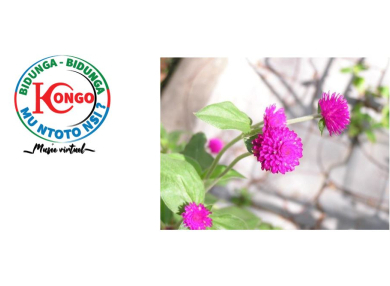
The Genesis of the Name: The Name Generates Memory
- « To misname things is to add to the misery of the world. To not name things is to deny our humanity. »
- « Naming things removes their danger. »
Once the subject of our research was presented, a process of questioning was necessary for the informants to produce a clear discourse on the history of the tchidéka flower.
Kongo-Lari Society
Let us return to the Kongo social imagination what belongs to it. The use of the tchidéka flower is a registered trademark of the Matsouanists. « Kiaku kiaku kia ngana kia ngana », (the exclusive property of each person is inviolable). Of the Kongo people, it can be succinctly said that they are a vast group settled in Angola, the DRC, Congo-Brazzaville, Cabinda, and Gabon. They are called « Bala ba Ngo »( those who have the panther as a totem). Coming from the Kongo Kingdom, anthropology classifies the Kongo within a group that includes: Kongo stricto sensu, Lari, Sundi, Manianga, Bembé, Dondo, Kugni, Kamba, Vili…
Kongo Kingdom
The Bas-Kongo region, the birthplace of Matsoua, is a piece of the ancient Kingdom of Kongo which also saw the birth of Kimbanguism, named after its founder Simon Kimbangu, in Nkamba.
The Matsouanists are 90% Kongo-Lari and come from the Pool region, within which is enclosed « M’Foa », a former Batéké village that became the city of Brazzaville following the meeting between Makoko and De Brazza in 1880. Unfortunately, this meeting had “alienating” ambitions, as evidenced by the structuring of the Bacongo district, through the imposition of street names with French connotations. The pathetic example of the so-called Case De Gaulle avenue, renamed avenue De Brazza, gives an idea of this cultural alienation. For context, in 1941, De Gaulle (The Man from London), who often stayed in Brazzaville, had a guest house built for himself in this African town. The work was entrusted to a disciple of Le Corbusier:
- « Roger Lelièvre, alias Erell, a young architect freshly arrived from London, was entrusted with the project of a “guest house for visitors”. ».
Furthermore: all the streets crossing Brazza Avenue bore the names of Parisian streets, such as Jean Bart, Surcouf (where Pierre Kinzonzi lived), Aragon, Bertelot, Voltaire, Condorcet (where Félix Tchicaya lived) Joly (where Victor Ouamba lived). Renowned Matsouanists (Nzoungou, Tsakaka) lived in this “French quarter” where the flame of radical anti-colonial resistance was rekindled.
Behind the imposition of these references lay the desire
